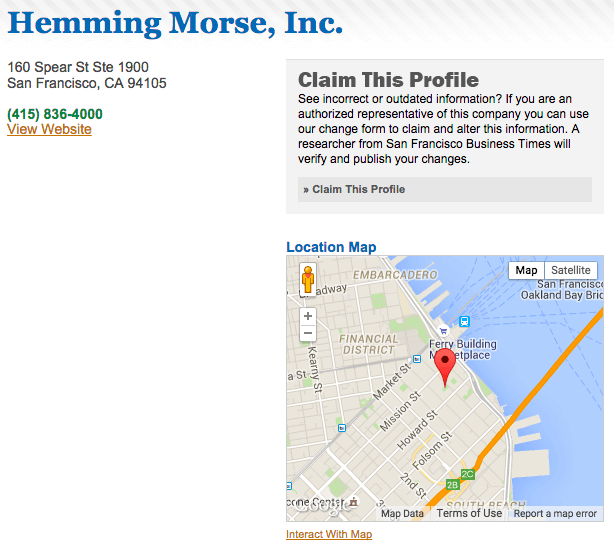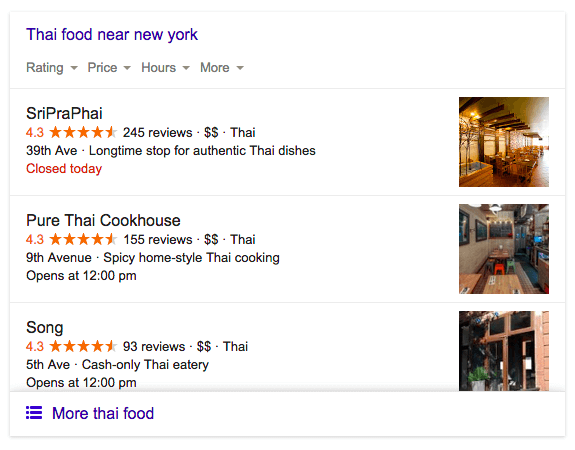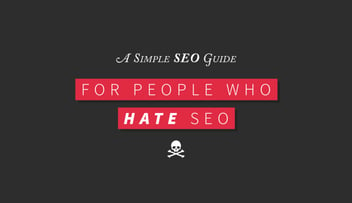7 Little-Known Factors That Could Be Ruining Your Search Engine Rankings
Local SEO can be very tricky.
As a result, a lot of business owners tend to fall back on simpler old-school SEO strategies that can be very damaging. Unless you’re an SEO professional, it can be hard to distinguish between what worked in 2013 (or before!) and what works today.
If you’re doing SEO yourself, you could be executing a few strategies that could be harming your rankings, not improving them. Below we highlight seven commonly overlooked factors most business owners fail to see which can end up damaging their rankings, and give you the necessary fixes to get back on track.

1. Business Directory Errors
One of the most important elements of your local SEO strategy is called NAP. It stands for Name, Address, and Phone number. A lot of business owners know the importance of keeping this information up to date, yet most don’t have time to do it.
By having inconsistent directory information, you’re waving a huge red flag for Google. Correct and consistent NAP information is one of Google’s biggest ranking factors.
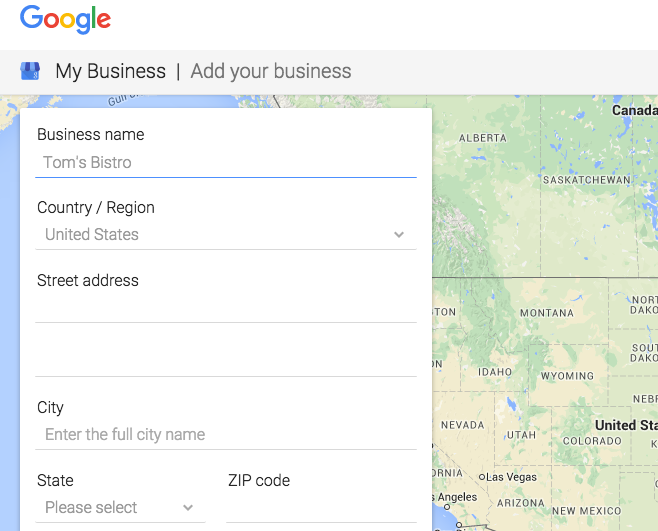
Google My Business is one of the most important directories for your local business.
If you’ve moved locations in recent years or have changed business phone numbers, you must take the time to update your information. In order to properly rank your website, Google looks at every available data point to see if it checks out. Even a simple typo can diminish your rankings. You have been warned!
2. Barren Directory Information
Getting listed in local directories isn’t very difficult, but it takes a lot more time to utilize these directories to their full potential. If you want your local business to rank, you can’t leave your directory information empty.
There are apps that promise you hundreds of local directory listings, but these won’t help your SEO efforts unless your profiles have been fully filled out.
[Tweet “Spending time with the tiny 1% details will help you outrank your competitors.”]
When customers search for a local business, there’s a chance that your directory listing may rank above your website. You’d hate for them to come across your listing and think your business isn’t operational because there isn’t enough information available.
Fill out every available option in your directory submissions. A recent study found that consumers are interested in your pricing information, hours of operation, and your website URL, in addition to the regular NAP information.
3. Short Content
Google tends to favor longer form content that’s more useful to website visitors. Long-form content is content that exceeds 1,500 words. This content is incredibly valuable to website visitors, and search engines tend to mark this content as more valuable.
A simple Google search shows that most of the top search results are populated with long-form content. However, shorter content can still be very useful; especially if a large portion of your website traffic comes from mobile users.
It’s important to have a content strategy that caters to every segment of your market. Large, high-traffic websites can get away with only posting shorter content; however, your business probably cannot.
4. A Lack of Mobile-Friendliness

Over the past few years, Google has been adamant about sites adopting mobile usability. The latest algorithm update started pushing sites down in the search engine rankings if they weren’t mobile friendly. This trend will only grow into the future.
If your site isn’t mobile-friendly, your traffic from mobile searchers is going to decline. Period.
Mobile-friendliness encompasses elements like site adaptiveness and responsiveness to smaller screen sizes. It also means that you must remove elements from your website that don’t perform or show up on mobile browsers, such as Java, and some forms of advertising.
The best way to see if your site is mobile-friendly or not is to run it through Google’s mobile-friendliness test. If you have a Google Webmaster Tools account, it will also give you a warning if your site isn’t optimized for the mobile web.
5. Keyword-Stuffed Content
Keyword stuffing is an old-school SEO strategy that will do nothing more than lead to a sitewide penalty. However, some local businesses still try to stuff their web copy, blog posts, footer and sidebar with endless local keywords.
Keyword stuffing and the overuse of a single keyword throughout your text qualifies your content as thin content. This style of content will lead to a penalty that’s been active since the Panda update.
The best way around this is to create content that focuses on keyword groups, instead of a single keyword. Keyword groups are related keywords that share the same topic. When you’re creating new content it’s helpful to have a group of five to ten keywords in mind that you’re going to use throughout your post.
This makes including keywords more natural, and will help you create more comprehensive and well-written content.
6. A Lack of Local Neighborhood Optimization
Although neighborhood optimization for local SEO is still relatively new, you could benefit your SEO by optimizing your website before the algorithm factors are in effect.
As mentioned above, Google factors in the location of your business when ranking your website. So, it’s probably more difficult to rank for local communities and neighborhood names.
By taking the time to optimize your site for neighborhood keywords now, you’ll be ahead of your competition once the algorithms do shift in that direction.
You can optimize your website for your local neighborhood by including your neighborhood name in your descriptions on your directory listings, in the text of your website, within your site’s title pages, and any other citation profiles.
7. No Push for Local Reviews
Most of your local SEO strategy is under your control. For instance, you can control your directory listings, your social media accounts, your content and most other ranking factors. However, there’s one big factor you have less control over: reviews.
Reviews are incredibly important for local rankings. If you’re not motivating your visitors and past clients to leave reviews, you’re doing your business a disservice. Google tends to favor businesses that have higher reviews, so you’ll need to do everything in your power to ensure your reviews are growing by the day.
To build up your reviews, sometimes all it takes is a simple request. After all, if a customer loves your business, why wouldn’t they want to help you out? Especially if you make it easy for them to do so.
Bonus Factor: No Social Signals
Social signals isn’t an official ranking factor in Google’s algorithms, but you can bet it’s going to play a role in the future. Besides, with social media you can send a flood of traffic through your doors without even having a real website.
A lot of businesses have seen success by simply optimizing their social media profiles. When someone searches for your business from their phone, the information that’s displayed is often sourced from your social profiles.
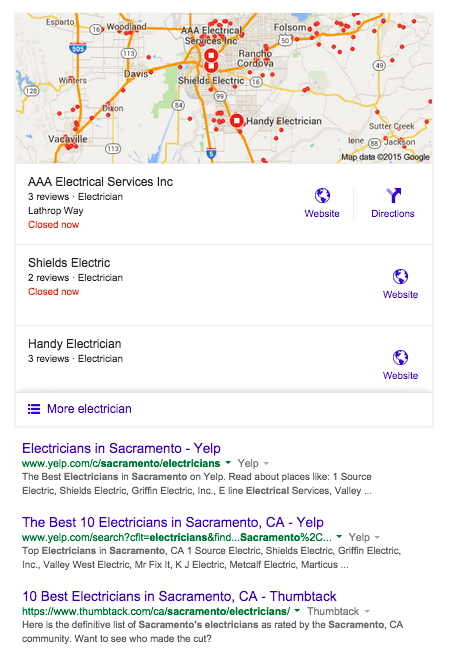
These results are almost completely reliant on information from social sites, including Google Plus and Thumbtack.
Some customers even prefer to view your business on Yelp, Facebook, or TripAdvisor instead of your actual website. This gives them access to valuable customer information and reviews, which will help them make their decision.
So yes, a website is important, but so is having a full-fledged social media strategy. And ultimately, it all benefits your SEO.
Summing Up
Local SEO can be tricky, but by avoiding the mistakes above you’ll not only see your rankings increase, but new traffic come through your doors as well.
Getting your SEO right is an ongoing process, and your success will come from your attention to the details that most other businesses overlook.

